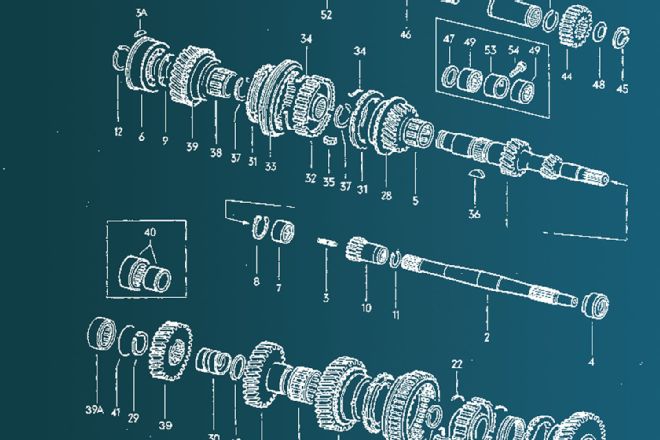Seems our intro in the Feb '10 issue was a hit. Here are some more facts you might not know about Eric Hsu:
 |
May 2010 Question IT
|
May 2010 Question IT
1.
Eric Hsu mounts, balances, and shaves his own racing slicks. With his bare hands.
2. As a child, Eric Hsu would check his Halloween candy for poison and razor blades. Those were the only ones he ate.
3. Eric Hsu was cast as the original Dom Toretto, but was replaced by Vin Diesel when the director wanted "someone who wasn't such a badass".
4. Eric Hsu went into S.W.A.T.'s house, and disrespected their whole family.
5. Eric Hsu can weld titanium and aluminum. Together.
6. On May 17, 1986, a unit of measure known as the "Hsupower" was established. To date, no vehicle has ever made enough power to warrant its use.
Why Is Eric Always Right?
In the April '09, and Aug '09 issues, Eric Hsu recommends the Cosworth M2 272-degree camshafts for the EVO. Is he only saying this because he works for Cosworth? With that aside, in the July '08 issue, an anonymous reader inquired about obtaining higher rpm from his Honda without 'busting something'. Why not recommend a B16B1 or B18C1 head, ARP rod bolts, and a chipped ECU? Also, in response to a question in the Oct '08 issue, I would recommend Sgt. Montanez spend $5K on a B-series engine, a tiny T3/T4 turbo, injectors, a Walbro 255 lph, and a good tune rather than spending $5K on a K-series swap. On the same page, Gabriel Kent was told his Honda Civic (EG) might not want to fuck with a 300ZX-TT, but Mr. Kent never mentioned if he had an engine swap or was still using the factory D16 motor. A DOHC VTEC with adjustable timing gears on both the exhaust and intake camshafts would definitely give a modified 500hp 300ZX a run for the money. In short, aren't Eric Hsu's replies to "Question IT" supposed to be unbiased? P.S. Congrats on Mr. Hsu's engagement, best wishes!
-Josh Le Vasseur
via importtuner.com
Thanks for the congrats. As part of the product development team at Cosworth, I have full confidence that Cosworth parts are the best, since we generally review and test a large majority of competitors' products before releasing ours on the market. Truth be told, if it wasn't the best, I wouldn't have my name associated with it. The last time I checked we have five F1 teams on this year's grid, so we all have a pretty important image to protect. BTW, where are those other companies' F1 engines? As far as being biased, I am biased as a motherfucker, but you've already noticed that, so let me spell out my biases for you: turbo engines, bigger engines, proven engine components, Cosworth, rear-wheel drive, all-wheel drive, and high-but-not-too-high-horsepower cars (filling blocks with cement isn't for me). I hate cheap shit made in China, knock-offs, and second-rate "high performance" car parts. Feel free to pick apart my advice all you want. When you've been doing this as long as I have, you can get a column and you give your advice. Until then, read mine.
Boost Disaster
I spent the entire summer trying to avoid writing in, but after numerous upgrades and maintenance on my '03 WRX and '85 300ZX (Z31) Turbo, I've run into identical problems with both. I replaced the turbo and the clutch with OEM replacements (nothing modified), but both vehicles mysteriously tach out at 5,000 rpm at only half throttle and I can't understand why?
-BBC
via importtuner.com
It's hard to diagnose problems remotely, but it sounds like there are vacuum/boost leaks in the system. Since both of your cars have mass air flow meters, it is critical that the charge systems are sealed and have absolutely no leaks. Since the Z is an older car, most of the time you'll find that cracked rubber hoses are the culprit. Even small cracks can cause major problems, so you'll have to inspect all the hoses carefully. The WRX has a fairly short charge system compared to the Z, so it should be easier to diagnose. The rubber hose that connects the top-mount intercooler and the throttle body often cracks. Also, the two intercooler inlet hoses on the bottom of the intercooler are easy to install crooked, and can also result in a vacuum/boost leak. Ideally, on both cars you should replace all intercooler transition hoses with silicone hoses and new stainless steel worm drive clamps. If you still have problems, you'll have to pressurize the charge system and listen for leaks. Small leaks can be found with a soapy water solution sprayed over all transitions, hoses, gaskets, etc. It's a pain in the ass, so good luck!
Nerd Alert!
I'm a first-year engineering student from Canada, and decided to design my own intake plenum for a Nissan RB26 in a student edition of the program Solid Works. I've been looking into the use of Helmholtz Resonance in the design of intake and exhaust systems and am curious if it's just as effective in boosted applications, and if there are any changes to the theory when the plenum pressure is greater than atmospheric pressure. This is the document I've been getting most of my info from; I'm not really sure how accurate it is, but it's the best I've come across:
www.grapeaperacing.com/tech/inductionsystems.pdf
I asked my physics professor, but he really wasn't any help.
-Matthew
Houston, TX
For turbocharged intake plenums, we at Cosworth do not take into account the Helmholtz resonance factor, due to the intake plenum's pressure being greater than atmospheric. In other words, it isn't possible for a pressure wave to travel within the plenum or intercooler tubes, since the pressure is nearly always positive on a turbocharged engine (under throttle). While a lot of our plenum designs are influenced by engine simulation software, empirical testing usually decides the final designs. Our engineers have a lot of experience with plenum design, which helps speed the process tremendously. Good luck with your design and let me know how it works out after testing.
Code Talk
I would like to have an OBD1 reader that connects to a laptop to check for trouble and safety codes. Is this something you can help with?
-Peter Kellogg
Freeport, ME
Since there is no communication standard for OBD1 vehicles, it would depend entirely on what kind of car you have. OBD1 is manufacturer-specific. Generally, there is a lot of OBD1 support for domestic vehicles and very little support (to the public) for Japanese and European vehicles. You may want to try Auto X-ray, SPX and Snap-On for some OBD1 diagnostic equipment.

